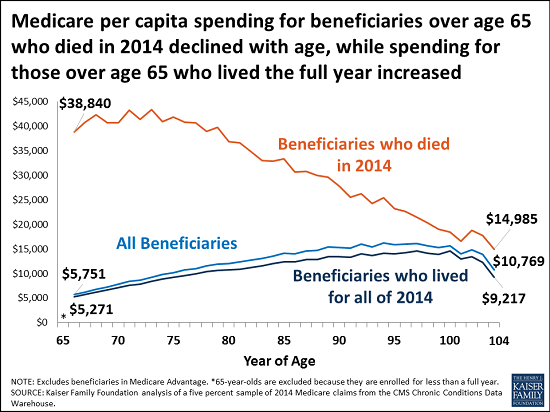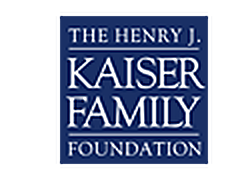Analysis Finds End-of-Life Medicare Spending Declines With Age Among Seniors
Among beneficiaries who died in 2014, Medicare spent significantly more per person on medical services for seniors in their late sixties and early seventies than on older beneficiaries, according to a new data note from the Kaiser Family Foundation. The analysis comes at a time when physicians can now be reimbursed by Medicare for end-of-life care discussions with their patients.
The analysis of Medicare claims data through 2014 finds that among those who died in 2014, average Medicare spending per person peaked at age 73 ($43,353 in 2014) and generally declined after that to $33,381 among 85-year-olds and $27,779 among 90-year-olds. In contrast, Medicare per person spending increased with age among Medicare beneficiaries who lived through the entire year, peaking at age 97 ($14,620 in 2014) before declining.

The finding contradicts a popular assumption that Medicare, the federal health insurance program that covers 57 million seniors and people with disabilities, spends heavily on end-of-life medical care for the oldest beneficiaries.

While spending for beneficiaries who die in a given year is not a major component of Medicare spending, it does account for a disproportionate share of the total. In 2014, 4 percent of people on Medicare died that year, accounting for 13.5 percent of Medicare spending in 2014. Medicare spent nearly four times more on people who died in 2014 ($34,529 per person, on average) than on those who lived the entire year ($9,121), with a large share of the difference attributable to higher spending on inpatient hospital services. The share of total Medicare spending for people who die in a given year has actually dropped over time, from 18.6 percent of traditional Medicare spending in 2000 to 13.5 percent in 2014.
The analysis examines spending on traditional Medicare beneficiaries during the calendar year in which they died; it does not look back at spending in the full 12 months prior to their death. It also does not include spending on beneficiaries in Medicare Advantage, for whom data was not available.
Filling the need for trusted information on national health issues, the Kaiser Family Foundation is a nonprofit organization based in Menlo Park, California.
